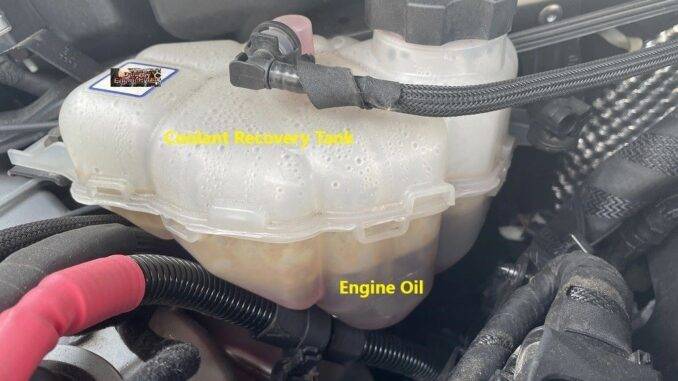
By learning what the leaking head gasket symptoms are, you may be able to save yourself, thousands in repairs.
Consequently, a leaking head gasket, can lead to repairs to the tune of, $1000 to $3000.
But, if you can learn the common leaking head gasket symptoms, you may save yourself a ton of money.
So, if you suspect that you have a leaking head gasket, you need to have that confirmed.
Every modern engine has this gasket. But, they vary in their thickness and construction, based on the manufacturer’s design of the engine.
Always Confirm By Testing, Because Some Symptoms Can Be Misleading
A driver will often wonder, what causes a blown head gasket. The truth is, anything from the coolant system, to the combustion chamber leaking. Most confusing is the fact that symptoms, which resemble those of head gasket failure, can start from other causes. In certain cases, a symptom might show, due to multiple failures within the engine.
Examples Could Include The Following:
- So, a restricted radiator, can cause overheating. And, can get worse, the farther you drive.
- Coolant in the oil, is usually blamed on head gaskets. But, could actually be due to, problems with the intake manifold gasket.
Symptoms such as these, may or may not be, due to the head gasket. An accurate diagnosis often depends on, the expertise of a skilled technician.
The head gasket seals the combustion chamber, allowing your engine to build the proper compression and contain exhaust gases. The head gasket also, keeps coolant and oil out of the combustion chamber, which is very important.
So, a reliable way to determine whether a head gasket is leaking, is to test for carbon dioxide. In this test, the coolant is checked for, traces of combustion gasses.
The test is performed with an apparatus that, utilizes a solution that changes color upon contact with carbon monoxide. You just need to know, what signs to look for.
Leaking Head Gasket Symptoms:
Chronic Engine Overheating
One symptom is, a consistently high temperature of the engine, and may show bubbles in the rad. So, this is a symptom, that can be easily checked from, the temperature gauge of the dashboard. Chronic engine overheating, may be both a cause and symptom, of a leaking head gasket.
Significant Drop In Engine Coolant Level
Check the engine coolant level. If it has dropped suddenly, then there is a possibility that, the head gasket is leaking.
Mixing Of Coolant And Engine Oil
Check out the engine oil of your car. Because, if you notice a frothy formation on the dipstick, coolant and engine oil have gotten mixed. However, this could also just be, condensation in the crankcase.
White Smoke From Exhaust Pipe
If you notice sweet smelling white smoke, along with water droplets from the exhaust pipe. Then, you could have a leaking head gasket.
Popping Of Coolant Recovery Tank Cap
Let the engine rest and cool down for about twenty minutes. Then, open the car hood and locate the coolant recovery tank. If you remove the tank cap and it makes a popping sound. That could mean that the cooling system is still pressurized, even after the engine has shutdown. Consequently, this is a clear leaking head gasket symptom.
Sometimes, You Just Have To Remove The Cylinder Head, To Know For Sure
So, why is it often hard to get an accurate diagnosis, of a blown head gasket? Because, many problems are due to the similarity between issues, with head gaskets and other engine components.
Other Possibilities May Include:
- A chipped or warped cylinder head, which could affect the head gasket. But, would not necessarily be the result of, a blown head gasket.
- Corrosion at the surface of the head gasket, which would indicate a leak. But, one that would not necessarily be due to, a head gasket leak.
- A worn or leaking Intake Manifold Gasket. Allowing coolant to flow directly into a cylinder or oil pan.
In such examples, there is only way one to know whether the problems came, directly from the head gasket. And, that is, to remove the head and have it tested. Also, head gaskets can leak, internally or externally. But, internally is always worse.
Conclusion
So, to help prevent a head gasket failure, keep the engine coolant at the proper level. Also, make sure you have the correct mixture of antifreeze and water. And, get in the habit of checking your temperature gauge. Finally, if you notice it running hot, have it immediately checked out by your mechanic.
BY DANNY BENDER




